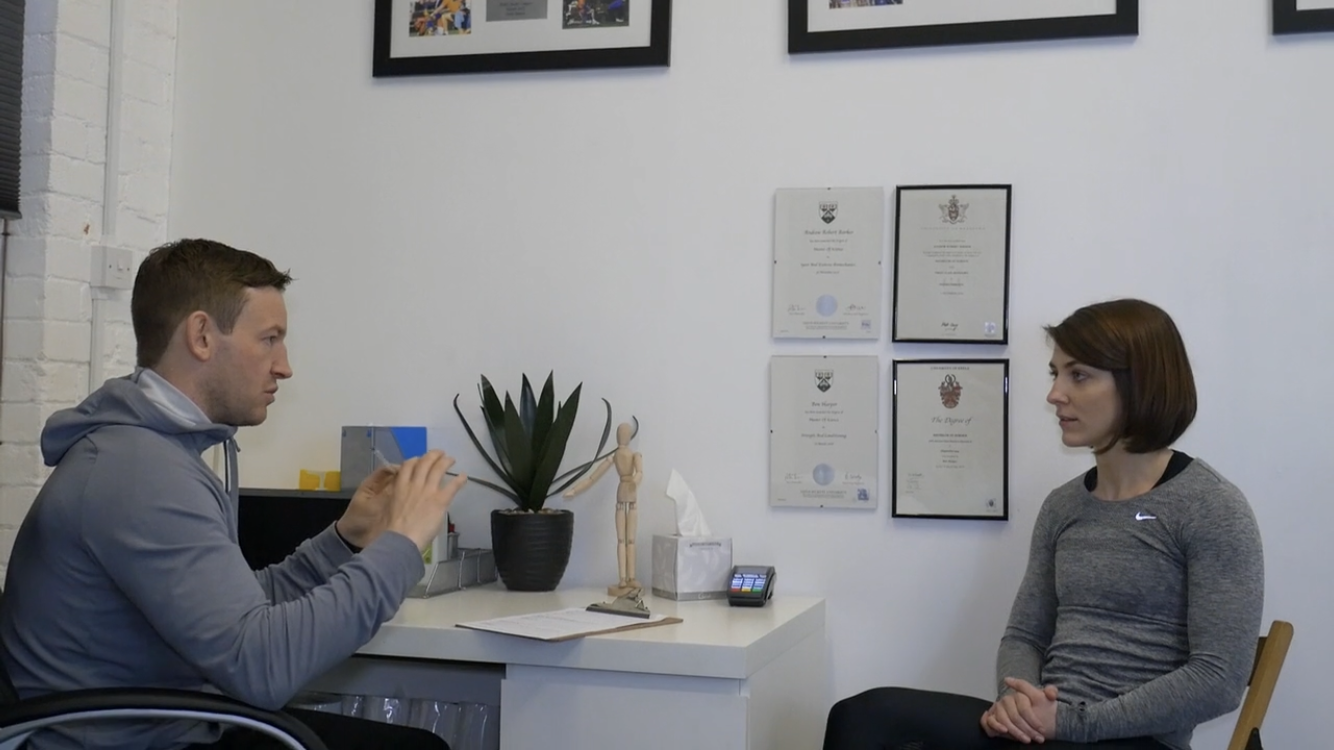Connect Before You Correct – The Key To Finding The Right Patient Diagnosis
Posted By: Andy Barker
Or being left feeling confused and overwhelmed with loads of assessment information that does not make sense.
To get accurate and helpful information from the patients or athletes you work with, you need to be able to connect with them.
This might seem obvious and very simple, but most therapists do not do this well.
Often the eagerness to get into the subjective assessment and start asking your patient questions about their injury means you skip any opportunity to connect with your patient…
And subsequently, the rest of the subjective assessment can often be a problem.
By a problem I mean that it does not give you the information you actually need to make a reasoned hypothesis as to what is going on with your patient and if you can not do that…
You will be less sure on how to approach your objective assessment, making it much harder to find an accurate patient diagnosis.
I have an admission to make first, that this is not a phrase I made up.
I was actually listening to a podcast with two of my best pals last week when I heard one of them, Nick, talk about how important it is to connect before you correct.
Nick is a primary school teacher and also runs a highly successful football coaching company for kids.
It is awesome and I now first hand how good as I take my eldest son their every week.
He picked this phrase up from when he was studying at Uni to become a teacher and has implemented this principle to his coaching with to great effect.
But this is not just applicable to teachers and coaches but to you as a therapist for a few different reasons.
Firstly, you need your patient to tell you everything.
In most cases you will be a stranger to your patient however within the first 10 minutes of meeting them you are going to be asking them some quite personal questions…
About their current problem…
About previous injuries…
About past or current physical or mental health problems…
Drug use…
Who they live with, what they do for a job, what they like to do away from work.
You would never give this much personal information to someone you just met, least of all information about your health and wellbeing.
Yet we expect patients to do this at every initial assessment, having only just met them.
And if you can not identify their real issue, you might find yourself trying to fix the wrong problems.
Down that rabbit hole, trying all sorts of different treatment techniques or rehab exercises yet nothing seems to work.
At this point your patient will start to lose faith in you and at this point they are even less likely to open up to you.
So how do you get patients to open up and give you honest and accurate information at that very first session?
You make an effort to connect.
This first happens right at the start of the session when you first meet your patient.
When you are dealing with any injury, remember that you are always dealing with a person too.
Person first, injury second.
Connect first….
Then you correct.
The correct part is referring to fixing their problems, like the shoulder range of movement they have lost, reduced strength in their hips or maybe their ability to squat well in the gym.
But before you get to this bit, you first must make an effort to connect.
There are a few different ways to do this but if I was to give you 1 top tip to put your patient at ease at the start of the session and make them feel relaxed and comfortable in your presence it would be this…
Ask Them Anything Other Than A Question About Their Injury.
This might be as easy as asking a simple question like…
Did you manage to find us ok?
Did you drive here?
Was the traffic ok on your way through?
Did you get parked up ok?
Have you done much this morning?
How did you hear about us?
Simple easy questions.
Questions that they do not have to think much about.
You only need to ask one or maybe two of these questions, not all of them.
The aim is to put your patient at ease, get them used to hearing your voice and get them to feel more relaxed speaking to you.
Do not fall into the trap of firing clinical questions at your patient as soon as they walk through the door.
Make an effort to connect before you start to correct.
This is going at add 20-30 seconds to your assessment but something so simple can make such a big impact to the success of your patient assessments.
There is a good reason why this concept is covered in the first video in my subjective assessment module within my New Grad Physio Members.
Get this right and you will find the quality of the rest of your subjective assessment is much better.
And a better assessment means an accurate diagnosis and problem list…
Giving you the answers you need to start your hands-on work and rehab exercises with the confidence you are treating the right problem.
Make this the first thing you do as part of your next patient assessments and let me know how you go.
Andy
PS. I have just taken in a new group of students and new grads into my membership who are all working through content just like this within the members area.
If you want to find out more about the membership and see if you you might be suitable then head here.

